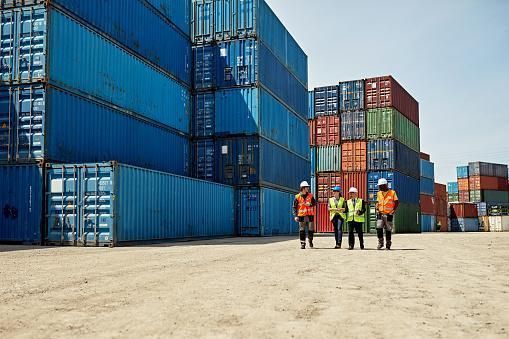What Is Freight Collect In Shipping
When you’re shipping goods around the world, there are a lot of different payment methods that can be used. One of these is freight collection, and it’s important to understand what this means for your business. In this article, we’ll look at what freight collect is and how it works in the shipping industry.
What Is Freight Collect?
Freight collect is a shipping term that means the carrier collects the freight charges from the consignee (the person or company receiving the shipment) on behalf of the shipper (the person or company sending the shipment). In other words, the consignee is responsible for paying the shipping charges, and the carrier acts as a collection agent for the shipper.
In a freight collect shipment, the shipper and the carrier have an agreement that the shipping charges will be paid by the consignee upon delivery. The carrier then invoices the consignee for the shipping charges and remits the payment to the shipper. This is in contrast to freight prepaid, where the shipper pays the shipping charges upfront and includes them in the invoice to the consignee.
Read More: What Is Sea Freight And Why Use It?
Benefits Of Freight Collect
There are several benefits to using freight collect in shipping:
- Cash Flow: Using freight collect can help improve cash flow for the shipper. Since the consignee is responsible for paying the shipping charges, the shipper doesn't have to pay upfront and can receive payment for the shipment before having to pay for the shipping charges.
- Risk Management: Freight collect can help mitigate the risk of non-payment for shipping charges. Since the consignee is responsible for paying, the shipper can be more confident that they will receive payment for the shipment.
- Customer Satisfaction: Some customers prefer to pay shipping charges upon delivery rather than upfront. Using freight collect can help improve customer satisfaction by offering them a more flexible payment option.
Read More: What Is LTL Freight?
Disadvantages Of Freight Collect
Despite the advantages, freight collect can also have some disadvantages. For shippers, there is a risk that the consignee may not pay the shipping charges. This could result in significant losses for the shipper and can potentially damage their relationship with the consignee.
Additionally, if there are any issues with the shipment, such as it being damaged or lost, the shipper may be liable for any additional shipping costs.
For consignees, there is a risk that they may not be able to negotiate a lower rate with the carrier than if they had paid for it upfront. Additionally, there is also a risk of being charged more than expected due to unexpected fees or taxes.
How Does Freight Collect Work?
To use freight collect, the shipper and the carrier must have an agreement in place. The agreement will outline the terms and conditions of the shipment, including the shipping charges and who is responsible for paying them.
When the shipment is delivered, the carrier will collect the shipping charges from the consignee on behalf of the shipper. The carrier will then invoice the consignee for the shipping charges and remit the payment to the shipper.
It's important to note that the consignee is responsible for paying the shipping charges, regardless of the condition of the shipment. If the shipment is damaged or lost, the consignee is still responsible for paying the shipping charges, unless they have a separate agreement with the shipper or carrier.
Read More: Who Is A Freight Broker And What Do They Do?
Freight Collect Vs. Freight Prepaid
Freight collect is the opposite of freight prepaid, where the shipper pays the shipping charges upfront and includes them in the invoice to the consignee. Both methods have their advantages and disadvantages, and the choice will depend on the specific needs of the shipper and the consignee.
Freight prepaid can be beneficial for shippers who want to have more control over the shipment and who want to ensure that the consignee pays the shipping charges. It can also be beneficial for consignees who want to have a more predictable shipping cost and who don't want to deal with the hassle of paying for shipping charges upon delivery.
Freight collect can be beneficial for shippers who want to improve their cash flow and who are confident that the consignee will pay the shipping charges. It can also be beneficial for consignees who prefer to pay for shipping charges upon delivery and who want a more flexible payment option.
Using freight collect can save both the shipper and the consignee money. Since the consignee is responsible for paying the shipping charges, they may be able to negotiate a lower rate with the carrier than if they had paid for it upfront. Additionally, since the shipper doesn't have to pay for the shipping charges upfront, they can save on administrative costs associated with billing and collecting payments.
Steps In The Freight Collect Process
The freight collect process involves several steps which must be followed to ensure that the shipping charges are collected from the consignee and remitted to the shipper. The following are the steps in the freight collect process:
- Establish terms of shipment: The shipper and carrier must agree on the terms of shipment, including who is responsible for paying the shipping charges.
- Create shipping documents: The shipper must create the necessary documents, such as a bill of lading and an invoice, to document the shipment and provide instructions on how the payment should be handled.
- Deliver shipment: The carrier will deliver the shipment and collect the shipping charges from the consignee on behalf of the shipper.
- Invoice consignee: The carrier will invoice the consignee for the shipping charges.
- Remit payment to the shipper: The carrier will remit the payment to the shipper, minus any fees or taxes that may be due.
A freight collect process is a beneficial option for both the shipper and consignee as it allows for more flexibility with payment terms and can help to reduce administrative costs.
All parties involved in the shipment must understand their responsibilities and comply with any agreements that have been put in place. By carefully following each step of the freight collect process, businesses can ensure that their shipments are delivered promptly and that the shipping charges are collected properly.
The Bottom Line
When deciding whether to use freight collect or freight prepaid, it is important to consider the specific needs of both the shipper and consignee. Freight collect can be beneficial for both parties as it reduces risk, improves customer satisfaction, and can help save money on administrative costs associated with billing and collecting payments. However, some risks should be taken into consideration.










